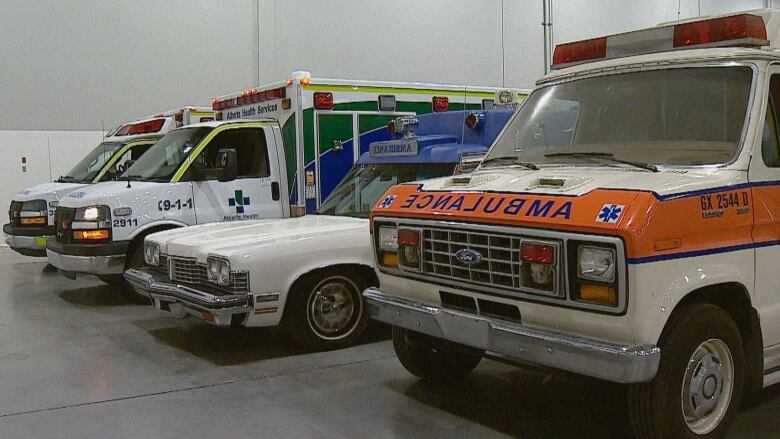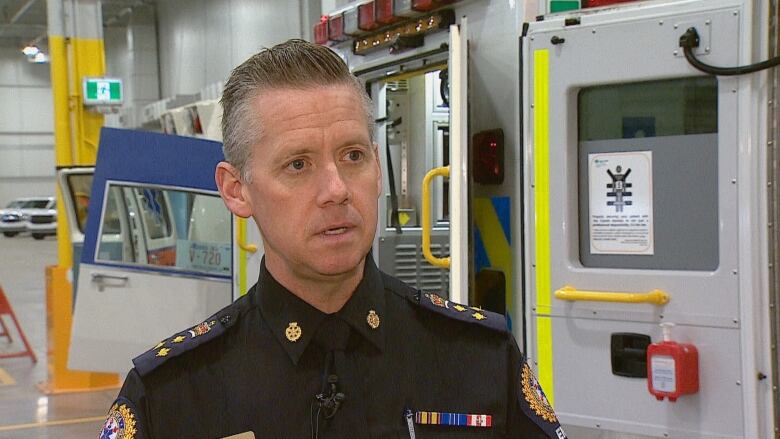Alberta's ambulance redesign safer for paramedics, says study
Alberta Health Services reports on-the-job injuries decreased by 16%

Alberta's ambulances have been redesigned to make them safer for paramedics and patients,after provincial research study came out with recommendations.
Thetwo-year research study by Alberta Health Servicesand the O'Brien Institute at the University of Calgaryresulted in several changes to the design in order to eliminate tripping hazards and make mobile-working easier.
Jeff Caird, co-author for the study, says researchers mounted cameras in the ambulances to capture how paramedics perform duties.
"There is a safety hazard design associated with cables, tubing and blood pressure cuffs," he said at a news conference on Friday. "All of that stuff gets in the way of the paramedic moving around the patient to deliver care."
In order to gather thisinformation, the study also included driving simulations and training scenarios in ambulances across the province.
Carid, who is also a professor in the department of psychologyat the University of Calgary, says they ran 48 scenarios, which involved 106 EMS personnel.

"We usedsound recording equipment as well to get what they're saying about resuscitating the patient on tape and see what they were doing," he said. "So the technology itself allowed us to do a lot more with understanding what was going on in a very micro way."
After that, the team translatedthese behaviours into design principles and recommendations.
Mike Plato, EMS associate executive director ,says some of the changes have already been implemented over the past few years, and have brought down on-the-job injuries by 16 per cent.
"The study focused on the paramedic and how they interacted with the environment within the patient compartment of the ambulance," he said."What evolved from this research is what we call 'safety oriented design.' It puts the safety of practitioners and patients at the forefront and designs a workspace for their benefit."

Plato says the changes have since been sharedglobally with other ambulance services acrossNorth America.
"All ambulances are able to benefit from these design principles," he said.
"To be able to remove opinion and preference and replace that with evidence and data from the study is something that is unprecedented for us to be able to to incorporate into our ambulance design."
The changes
Cairdexplainsthe following design changes worktoward reducing hazards andinjuries:
- Improving overall layout and seat design to encourage seatbelt use.
- Adding rounded corners on interior surfaces to prevent injuries.
- Adding lips or rounded edges to counters to prevent falling objects.
- Putting most-used tools and equipment in easy reach of the primary caregiver seat.
- Placing garbage and sharps containers in better proximity to the primary seat.
- Adding an additional grab handle for stability.
- Adding hydraulic lift for main oxygen tank.
- Adding more work surfaces (drawers, pull-out shelving).
Plato adds that being a paramedic is a physically demanding job in a mobile work environment so paramedics are pleased with thenumber of safety enhancements.
"Paramedics very much want to take care of the patient in the back and deliver care, and sometimes they sacrifice their own safety to do that. The redesign of the ambulance itself allows you to get around that problem, which is a good thing."












_(720p).jpg)


 OFFICIAL HD MUSIC VIDEO.jpg)
.jpg)



























































































